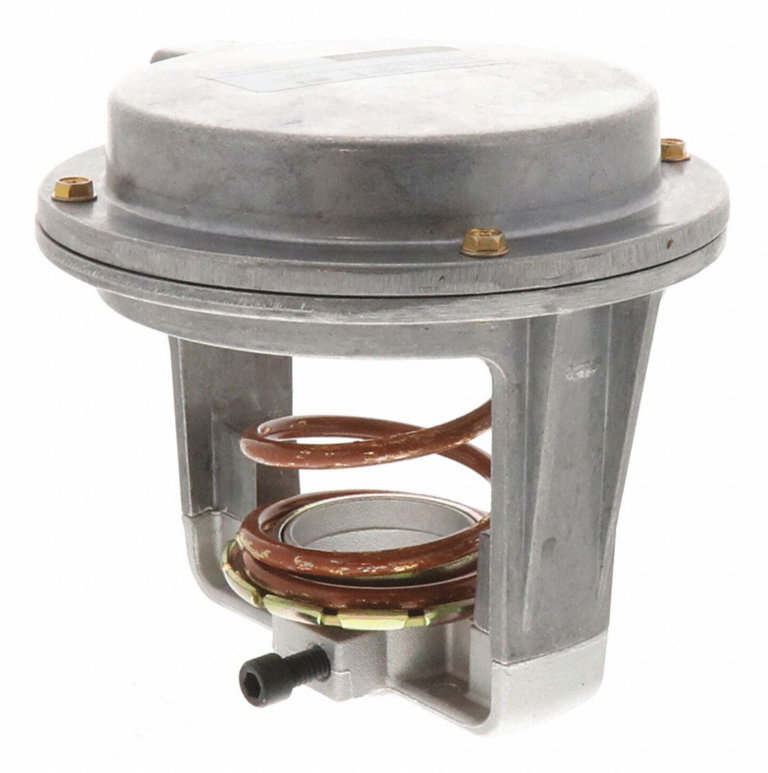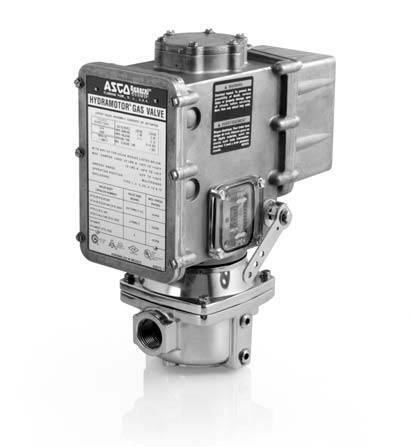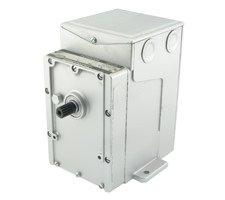Key Differences of Pneumatic, Hydraulic, & Electric Actuators

What’s an Actuator?
An actuator is a device that converts energy into mechanical motion, enabling control and movement in a wide range of systems and applications. Actuators take input energy (typically electrical, hydraulic, or pneumatic) and transform it into physical movement to perform specific actions, like opening a valve, rotating a shaft, or moving a robotic arm.
In essence, an actuator functions as the “muscle” of a system, where it responds to a control signal and carries out the required physical action. The type of motion it creates can vary—linear (straight-line), rotational, or oscillatory, depending on the design and application requirements.
What is a Pneumatic Actuator?
A pneumatic actuator is a device that uses compressed air to produce mechanical motion, typically either linear or rotary. It operates by receiving air pressure from a compressor, which pushes a piston or diaphragm within the actuator, creating motion. Pneumatic actuators, such as the Honeywell MP953C1026 are commonly used in industrial and automation settings, especially where quick, repetitive, and reliable movement is needed. Unlike electric actuators, which rely on electric motors to generate movement, or hydraulic actuators, which use pressurized fluid, pneumatic actuators are often preferred in environments where electricity may pose safety risks, such as flammable or hazardous areas. They are known for their simplicity, speed, and durability, with relatively fewer parts than electric or hydraulic counterparts, making them easier to maintain.
Pneumatic actuators also allow for rapid cycles and are effective for operations where precise control is less critical. This distinct combination of quick action, reliability, and safety makes pneumatic actuators ideal for industries like manufacturing, food processing, and chemical handling, where air-based energy provides a clean, efficient source of motion.

Shop Our Pneumatic Actuator
What is a Hydraulic Actuator?
A hydraulic actuator is a device that uses pressurized hydraulic fluid to generate mechanical motion, often for applications requiring substantial force. This actuator operates by receiving fluid from a hydraulic pump, which moves a piston or vane within the actuator, creating powerful linear or rotational movement. Unlike pneumatic actuators, which rely on compressed air, hydraulic actuators utilize liquid, usually oil, enabling them to produce significantly higher force with precise control.They are also distinct from electric actuators, which use electric motors to generate movement; hydraulic actuators are more durable for heavy-duty tasks and can sustain force without constant power, making them ideal for situations requiring a steady hold or continuous pressure. Hydraulic actuators are commonly used in construction equipment, such as cranes, loaders, and excavators, as well as in manufacturing machinery and industrial presses, where high power and precise control are essential. This unique capability to deliver strong, controlled force makes hydraulic actuators particularly suited for heavy-duty applications and harsh environments where other actuators may struggle to perform as reliably.

Shop Our Hydraulic Actuator
What is an Electric Actuator?
An electric actuator is a device that converts electrical energy into mechanical motion, typically through an electric motor that drives gears or a screw mechanism to produce linear or rotary movement. Known for their precise control capabilities, electric actuators can be finely adjusted for speed, position, and torque, making them ideal for applications requiring high accuracy. They are easy to integrate into automated systems, often with digital controls that allow for smooth operation and remote monitoring. Unlike pneumatic or hydraulic actuators, which rely on air or fluid pressure, electric actuators use electricity as a clean and efficient power source, which reduces maintenance needs and is more environmentally friendly.
Electric actuators are best utilized in settings where precision is crucial, such as robotics, medical equipment, and automated manufacturing processes. They are also preferred in applications requiring complex motion profiles or frequent adjustments, as their control systems can be programmed to handle intricate tasks. This combination of accuracy, ease of integration, and programmability makes electric actuators a versatile choice for modern automated systems.

Shop Our Electric Actuator
Differences Between Pneumatic, Hydraulic, & Electric Actuators
| Feature | Pneumatic Actuator | Hydraulic Actuator | Electric Actuator |
|---|---|---|---|
| Power Source | Compressed air | Pressurized hydraulic fluid | Electricity |
| Force Generation | Medium force, limited by air pressure | High force, suitable for heavy-duty applications | Moderate force, suitable for controlled applications |
| Precision & Control | Low to moderate precision | Moderate precision, stable under constant pressure | High precision, excellent control over speed and position |
| Efficiency | Medium, some energy lost in air compression | High, efficient in heavy load tasks | High, especially for light-to-moderate loads |
| Control Complexity | Simple to moderate control systems | Moderate, requires pressure control for stability | Complex, digital controls allow for precise adjustments |
| Maintenance Needs | Low, few moving parts, air compressors need upkeep | Moderate, risk of leaks and fluid contamination | Low, but electronic components may need servicing |
| Operating Cost | Low initial cost, cost-effective for simple tasks | Moderate, high cost for fluid maintenance and leakage | High initial cost, lower long-term energy costs |
| Environmental Impact | Clean, environmentally friendly | Potential environmental risk due to fluid leaks | Clean, lower emissions, energy-efficient |
| Best Use Cases | Quick repetitive motion, safe for hazardous environments | Heavy-duty tasks in construction, manufacturing, pressing | Precision applications in robotics, medical devices |
Control Valve Actuators: Pneumatic Actuators vs Electric Actuators [3 Factors to Consider]
Choosing the Right Actuator for Your Application
- Determine Force Requirements:
- For high-force applications (e.g., construction, heavy machinery), consider hydraulic actuators.
- For moderate force with quick response, pneumatic actuators may suffice.
- For precision tasks with controlled force, electric actuators are generally best.
- Assess Precision and Control Needs:
- For applications requiring high precision and programmable control (e.g., robotics, medical devices), choose electric actuators.
- For moderate control needs where stability is important, hydraulic actuators are suitable.
- For simple, less precise motion, pneumatic actuators can be effective.
- Evaluate Environmental Conditions:
- In explosive or hazardous environments, pneumatic actuators are safest as they don’t rely on electricity or fluids.
- For outdoor and heavy-duty environments, hydraulic actuators perform well with resistance to harsh conditions.
- Electric actuators are ideal for controlled, clean indoor environments where precise adjustments are required.
- Consider Maintenance and Operating Costs:
- For low-maintenance and cost-effective options in basic applications, pneumatic actuators are advantageous.
- For long-term, durable operation in high-force tasks, hydraulic actuators may justify the higher maintenance.
- For energy efficiency and lower ongoing costs, electric actuators offer savings in precise, automated tasks.
- Prioritize Energy Efficiency:
- If energy efficiency is a primary concern, electric actuators provide high efficiency, especially for sustained operations.
- Hydraulic actuators are efficient in short, high-force tasks but may consume more energy.
- Pneumatic actuators are less energy-efficient due to compression loss, making them better for intermittent tasks.
- Analyze Environmental Impact:
- For eco-friendly applications, electric actuators offer low emissions.
- Pneumatic actuators are also clean but less efficient.
- Hydraulic actuators may have environmental risks due to possible fluid leaks.
- Review Budget and Lifecycle Costs:
- For lower upfront costs, pneumatic actuators are typically more economical.
- Hydraulic actuators can be cost-effective for applications needing heavy force, despite higher maintenance.
- Electric actuators may have a higher initial cost but can offer lower lifecycle expenses in precise applications.

Shop Our Industrial Automation & Equipment Parts Gallery
Pneumatic vs Hydraulic vs Electric Actuators – FAQ
- What pneumatic component provides straight-line motion?
- A pneumatic cylinder provides straight-line (linear) motion by using compressed air to move a piston within a cylinder.
- What’s the key difference between hydraulic and pneumatic actuators?
- Hydraulic actuators use pressurized fluid for high-force applications, while pneumatic actuators use compressed air, offering moderate force and quicker, lighter motions.
- How do pneumatic vs electric actuators stack up in terms of energy efficiency?
- Electric actuators are generally more energy-efficient, especially in continuous operations, as pneumatic actuators lose energy in air compression and exhaust.
- What are the maintenance challenges with electric over hydraulic actuators?
- Electric actuators have fewer parts but may require electronic servicing, while hydraulic actuators face potential issues with leaks, fluid contamination, and more frequent upkeep.
- How do I calculate the power requirements for each type of actuator for my application?
- Calculate based on force, distance, and speed required, considering each actuator’s efficiency and energy type—consult manufacturer specs for precise requirements.
- Can I upgrade from a hydraulic to an electric actuator easily?
- Yes, but it may require system redesigns for compatibility, as electric actuators differ in force output, control methods, and power supply needs compared to hydraulic setups.
